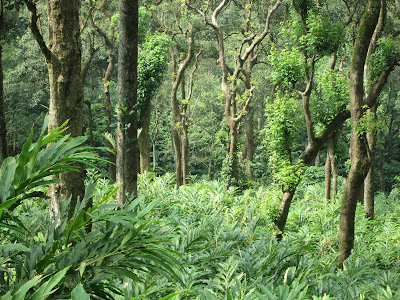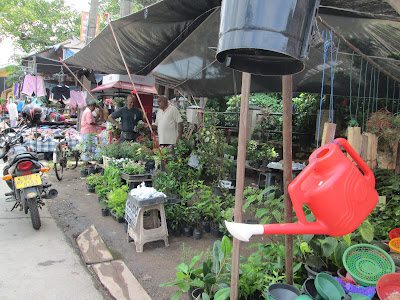A year ago, I planted two Kale plants with a few perpetual spinach (Swiss Chard) plants in a large tub and hoped they would cooperate with each other. After a few months it was obvious that one Kale was the dominate plant and overpowering the others. As it grew bigger and bigger I decided it needed the whole tub to itself, so the other plants got pulled up and eaten. I have included a few photos of my Kale plant in this post. It is the first one I have grown to get so big, and I am thrilled with it. I looked with envy at Kale I saw growing in a community garden on Bainbridge Island, Seattle a decade ago (Oct. 2014) but now I have one of my own! One plant is all I need to keep me fed. I use it in soups, curries, stir fries and salads. I would never have thought to use it in salads until Costco introduced us to their wonderful kale salad. I have also heard of Kale chips but have never seen or tasted them yet.
Kale is a cruciferous vegetable and like cabbage and broccoli etc. in that family, it is said to have anti-cancer properties. It is high in fiber, calcium, vitamins C and K plus other antioxidants. Kale is native to Europe and there are three main types: Curly, Tuscan (also called Lacinato or Dinosaur) and Red. You sometimes see a colorful ornamental type grown in city landscapes too. No doubt they are edible in a pinch. My Kale plant is the Tuscan type.....usually called Dinosaur around here and seems to be the best in local gardens.
Kale is a biennial plant so in our warm climate it will last two years even though it actually prefers cooler weather. It likes rich loam which is kept moist but well drained. It loves high Nitrogen and compost. Grow it in full sun or partial shade.
When harvesting use the older leaves first leaving the center top ones to keep the plant growing upwards. The leaves stay sweeter if the plant is kept watered and not stressed and allowed to dry out. The stems on the leaves are rather tough so I usually cut them off when cooking.
You can see in the photo that my older plant is now getting lots of small Kale heads growing up its stem. I do pick these small leaves for cooking too, but I have also started removing the whole keiki and planting it up in potting mix. This should give me some new Kale starts for the garden. Kale can also be grown from seed and takes 2 1/2 to 3 months from seed to harvest. The keiki taken from the stem will be faster.
You will notice I have some netting over the kale. That is to prevent white butterflies from landing on the leaves and laying their eggs. I have had to pick a few of their little green caterpillars off and check for them if I see any holes in the leaves.
Aloha











































